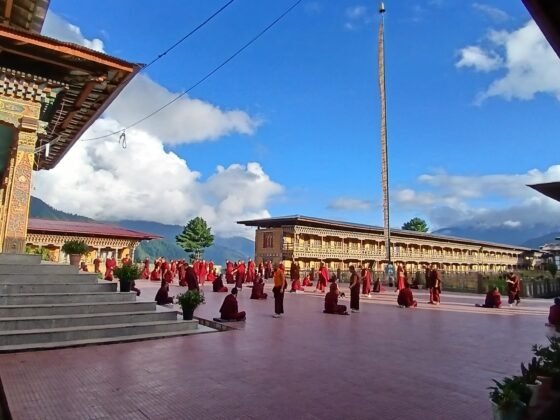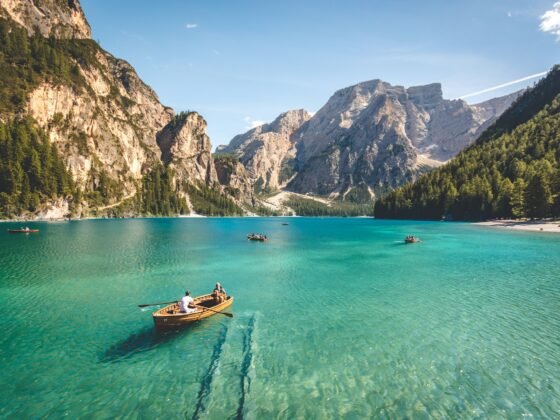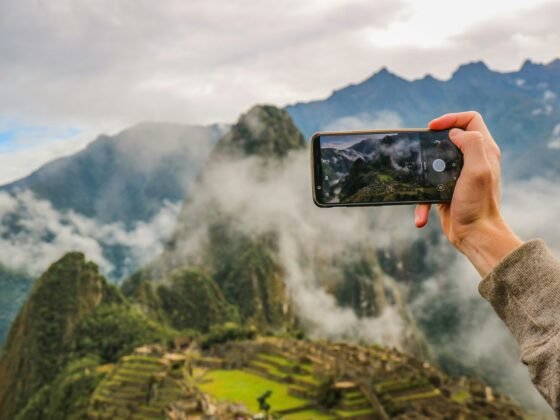Trekking in the Himalaya must be an ambition for every traveller and adventurer in the world. These spectacular mountains run in a interrupted line for hundreds of miles, from Kanchenjunga in the East to Nanga Parbat in Pakistan, separating the Indian subcontinent from the vast stepped and plateaux of Asia.
There are enough adventures there to last a lifetime, but if you could only go once and had to choose the trek that would suit you and your interest best, where would it be?
The majority of people who head to Nepal head to one of two areas. Annapurna to the West of Kathmandu and the Khumbu to the East. Many people haven’t heard of the Khumbu but they have heard of its main attraction – Mt. Everest, the World’s highest mountain. When it was first climbed by Edmund Hillary and Tensing Norgay in 1953 Nepal was known as the Forbidden Kingdom.
Closed to foreigners until 1951, there was no road to Kathmandu, all provisions having to be carried through the mountains to the Kingdoms central valley. This included the few cars driven by the ruling classes, which were dismantled, carried in and them reassembled! Those first climbers arrived onto a grass airstrip built in the Cities outlying paddy fields but now, happily, there is an International Airport which received daily flights from all around the world.
The Khumbu is a highland area. Many people start their trek at Lukla, the main airstrip that is served by daily flights from Kathmandu (weather permitting). See our last blog post to see what landing here is like. The trekking is fairly demanding as you are following a valley up into the high mountains – that of the Dudh Kosi – so you are always climbing. The target for most people is Everest base camp, the campsite for all the Expeditions that try to climb Everest every year. Not only is this a hard trek, its also high (over 18,000 feet) and the last day is on the Khumbu Glacier. People also trek to Kala Patar, a small peak on a ridge that offers a breath-taking view of Everest (you cannot actually see Everest from its Base camp, it being tucked behind the Lhotse-Nuptse ridge.)
People also visit the Gokyo Lakes, a series of three small glacial lakes in the neighbouring Gokyo valley. This stunning valley can be reached by taking the valley where it starts just above the village/town of Namche Bazaar, or for the more experienced by a small pass from the Khumbu.
A visit to Everest and the Khumbu is usually motivated by the desire to see Everest, trek to its base and enjoy the hospitality and observe the lives of the World-renown Sherpa people. The landscapes include rhododendron forest and high altitude alpine zone, but unless you walk in to the valley (rather that fly to Lukla) you do not experience the lowlands.
And so to Annapurna. The Annapurna Himal creates a vast amphitheatre, itself having four main summits as well as outlying ridges and peaks, the most famous of which is Machapuchure, the “fish-tail” mountain. The most famous trek is the Annapurna circuit, a two week trek that circumnavigates the entire Himal. The north of the mountain has strong Tibetan influences and is Buddhist in nature, while the southern flanks are Hindi and you also see a sacred Hindu shrine at Muktinath. There are lowland areas of pretty villages with thatched houses painted in earthy browns and whites, surrounded by extensive field terrace systems. You cross a high pass, the Thorong-la, which is over 17,000 feet high and trek down the wide Kali Gandaki River bed. This trek gives a greater range of terrains, cultures and people, but does not have the out and out high mountain experience of the Everest trek.
To get a feel of this you can visit the Annapurna Sanctuary, a trail that edges its way up a narrow valley into the heart of the massif,. It is the only main trekking route with avalanche risk, because of the huge peaks that tower above it. But the reward is to see the sanctuary, a huge hanging valley around which run all the main peaks of the Annapurna. It takes its name as the area was sacred to the Hindu Goddess Annapurna and women were banned from it so as not to upset her. Happily, this is no longer enforces and the Goddess seems to accept female visitors without getting angry!
So, its a personal choice but in a nutshell, its Annapurna for a flavour of many facets of Nepal and the Himalaya, Everest for the mountain and the Sherpa. There are of course many other trekking routes and areas that are open, but all these combined provide only a fraction of the footfall of Annapurna and the Khumbu. I like Kanchenjunga. Its remote, much less visited and from the great Milka Danda ridge has beautiful views.
In monsoon you should look at Dolpo or Mustang, hidden valleys that avoid the monsoon rains. One thing is true. Wherever you go you will be amazed by the spectacular scenery that you find waiting for you.
For more information on Nepal and loical tour operators, please visit our Nepal Country Guide.












